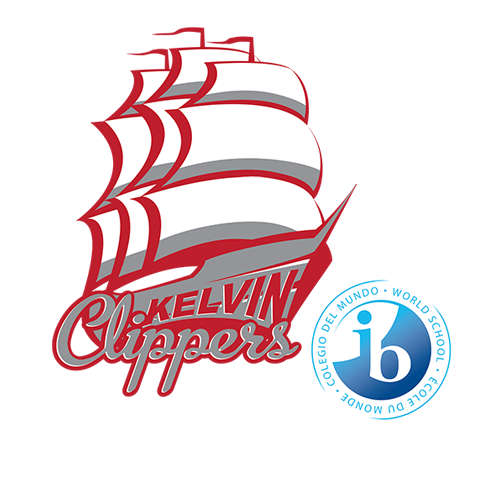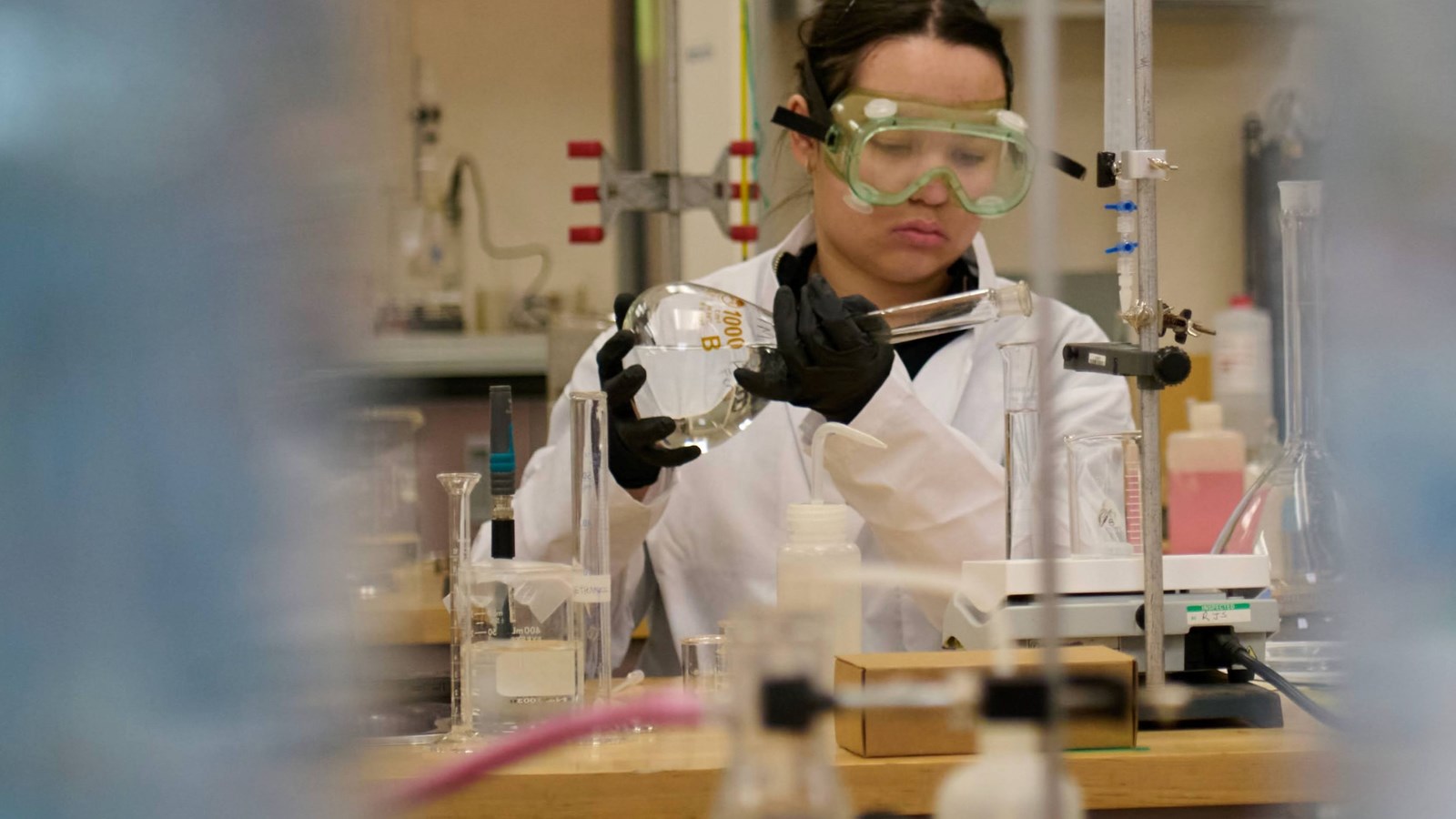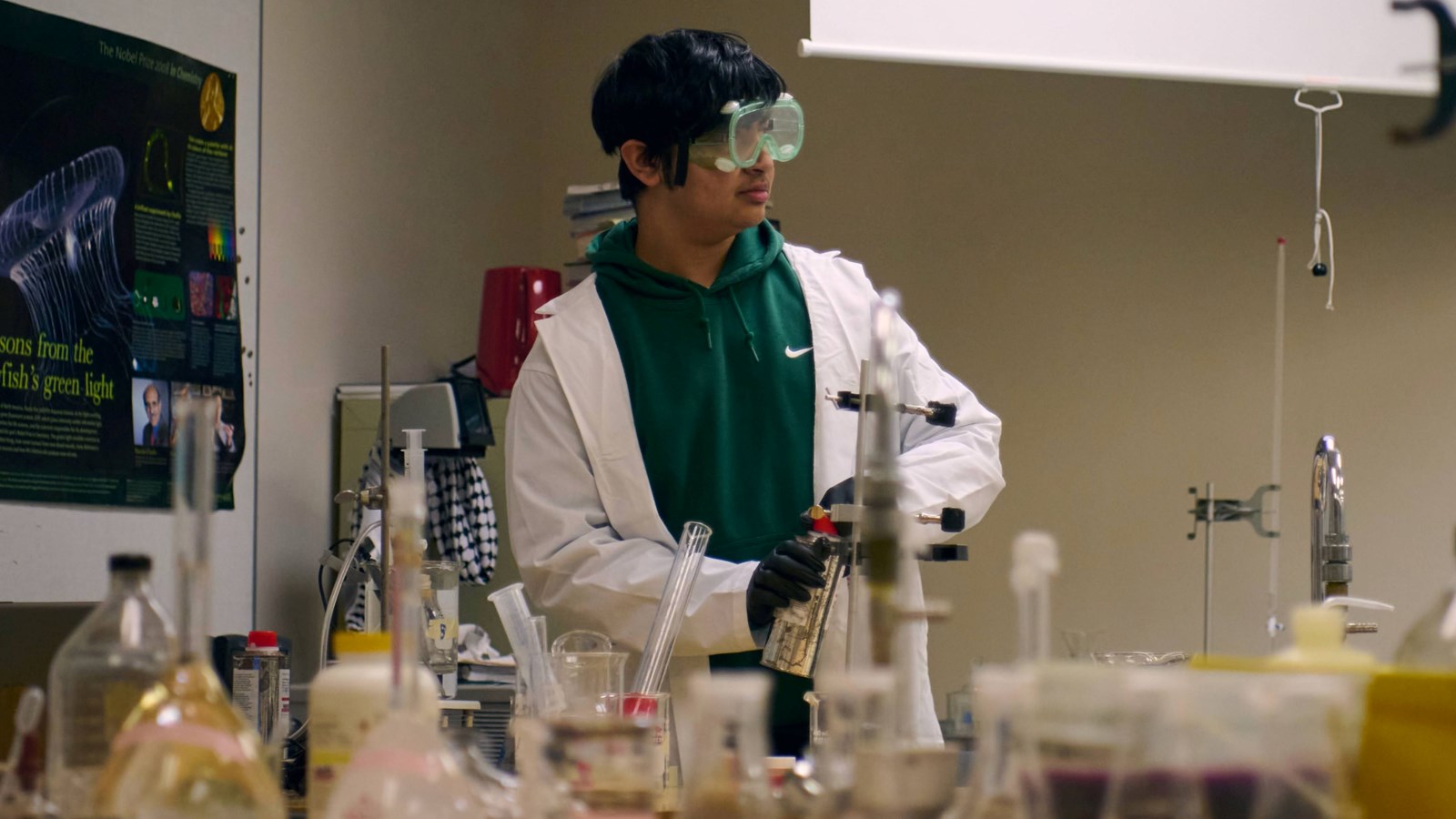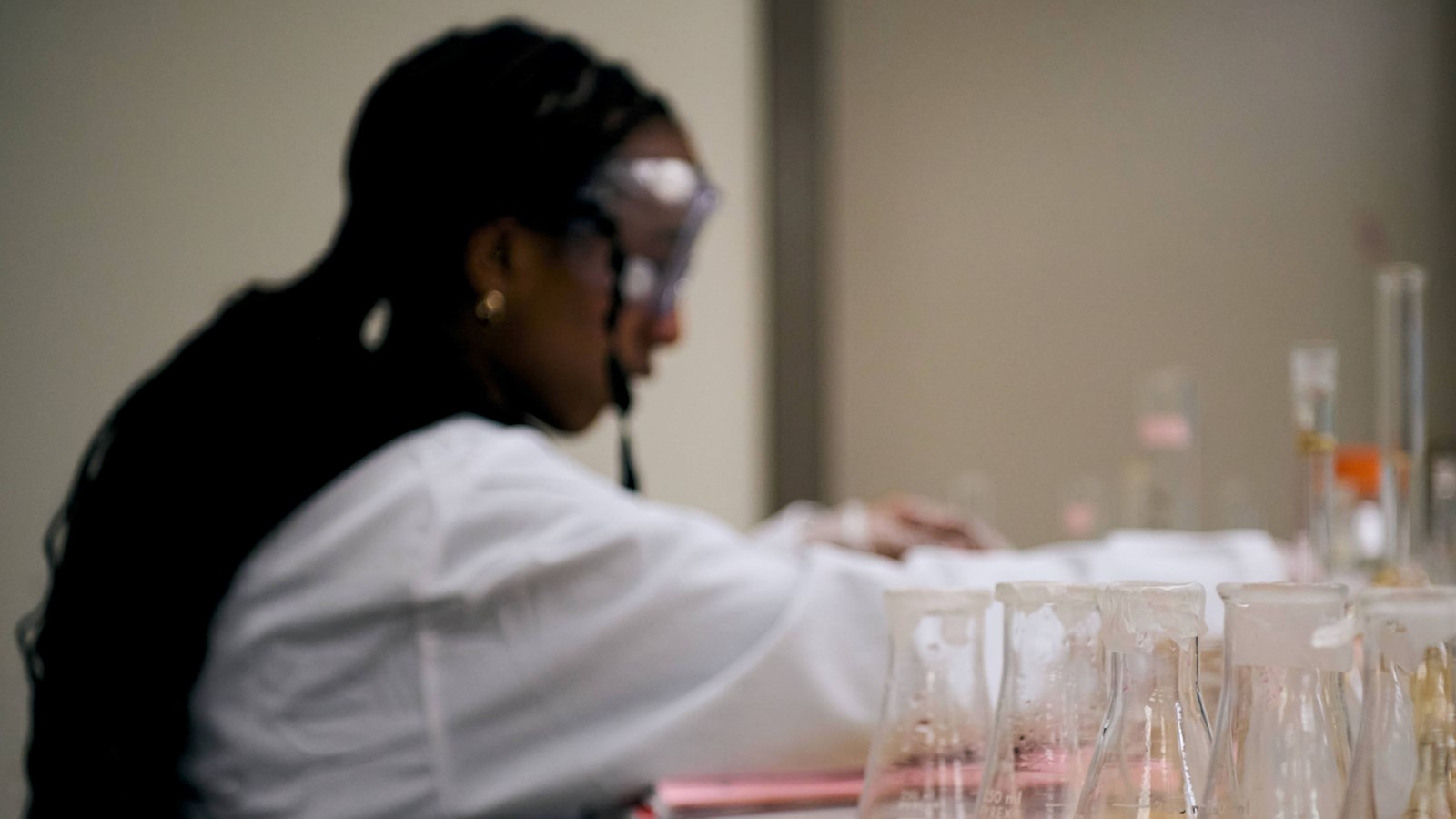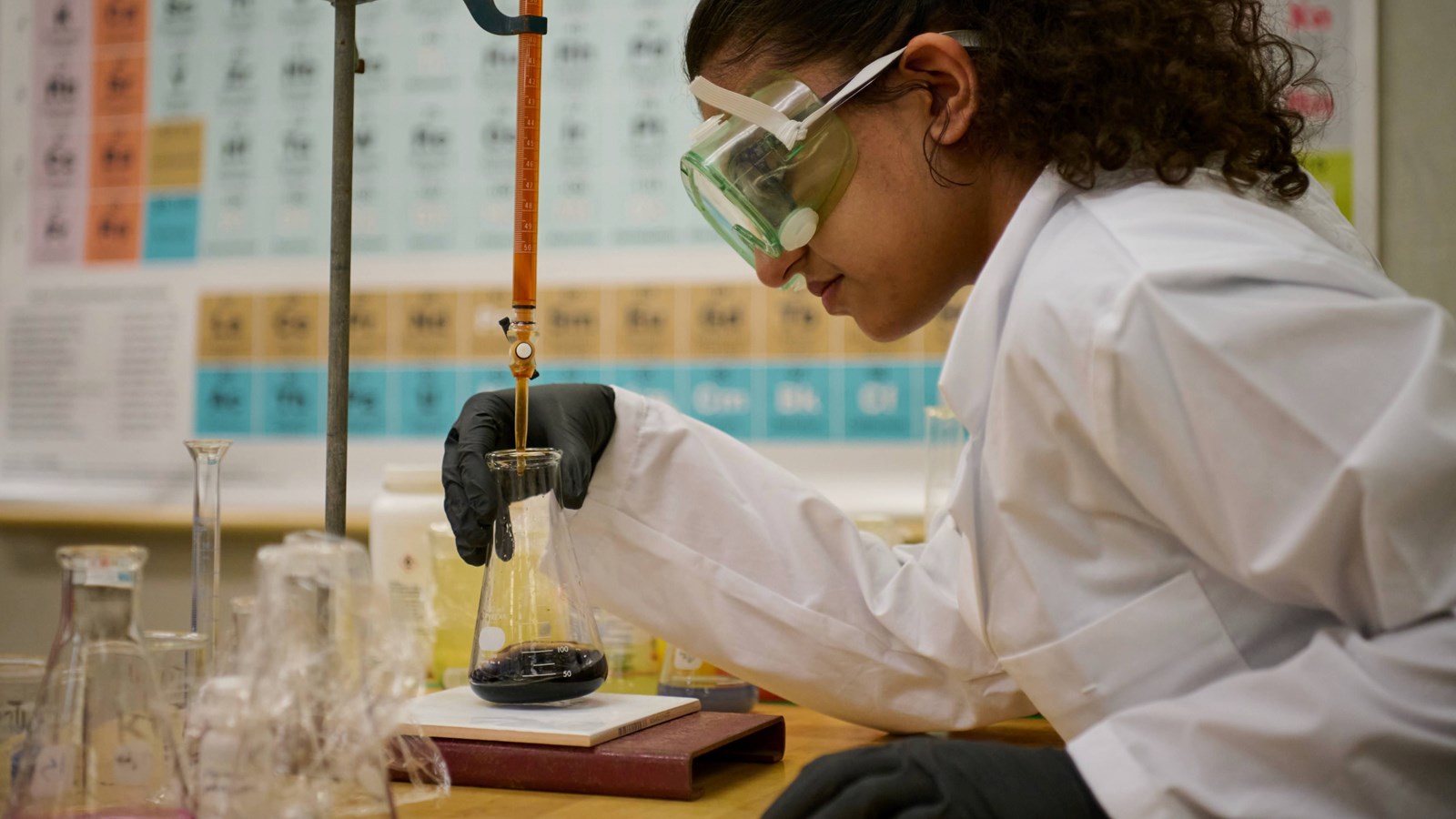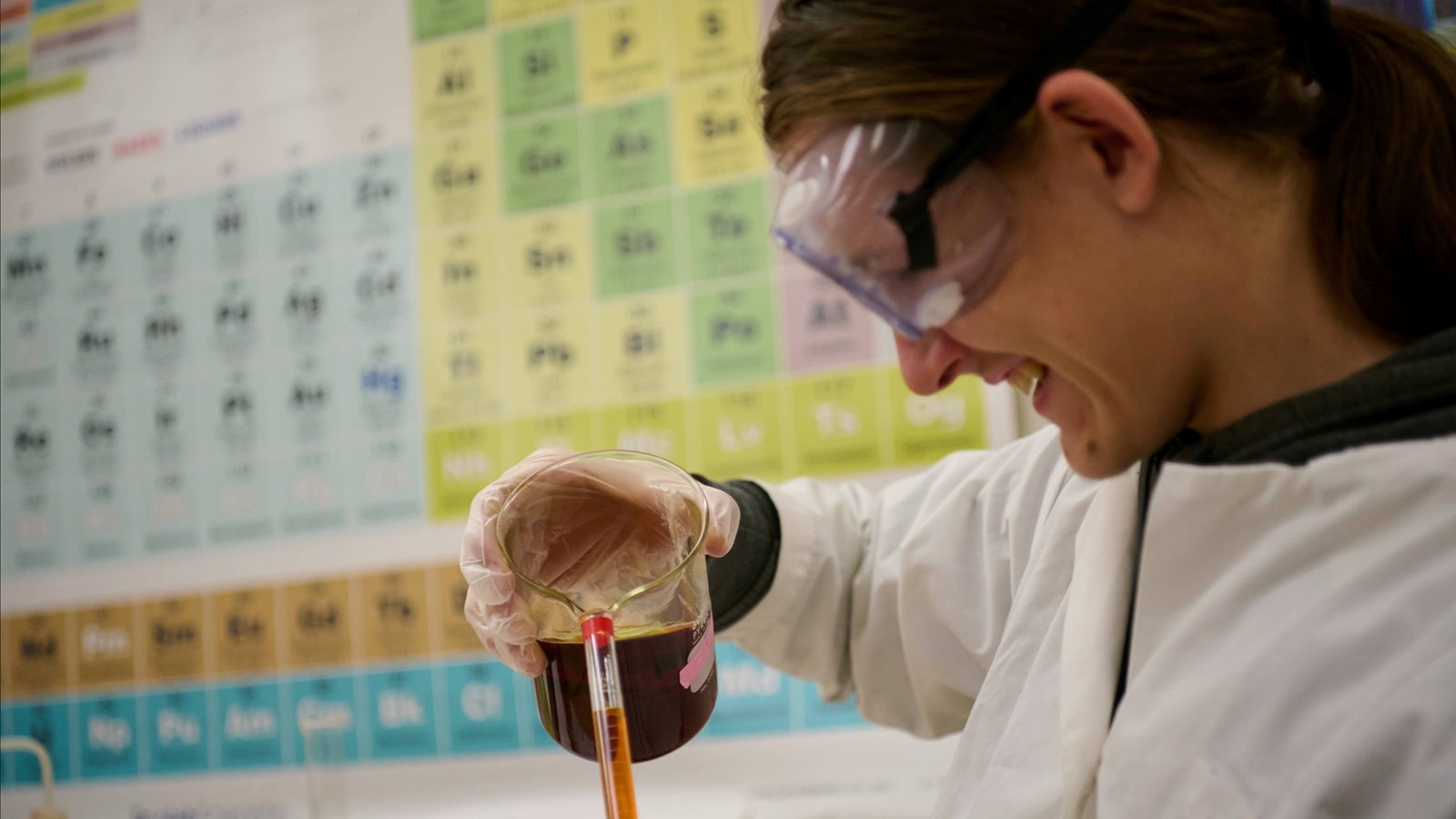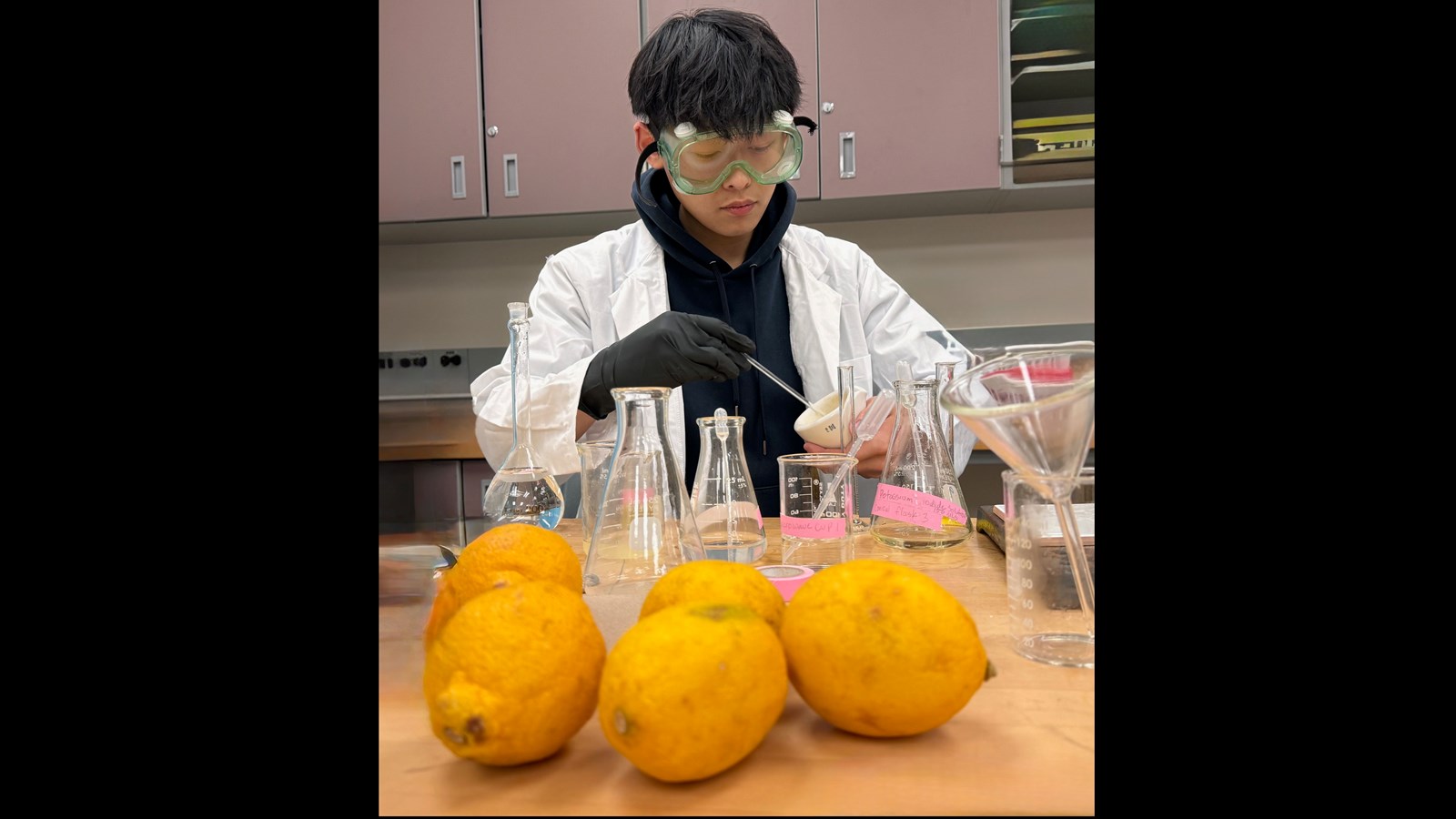Design Labs
June 11, 2025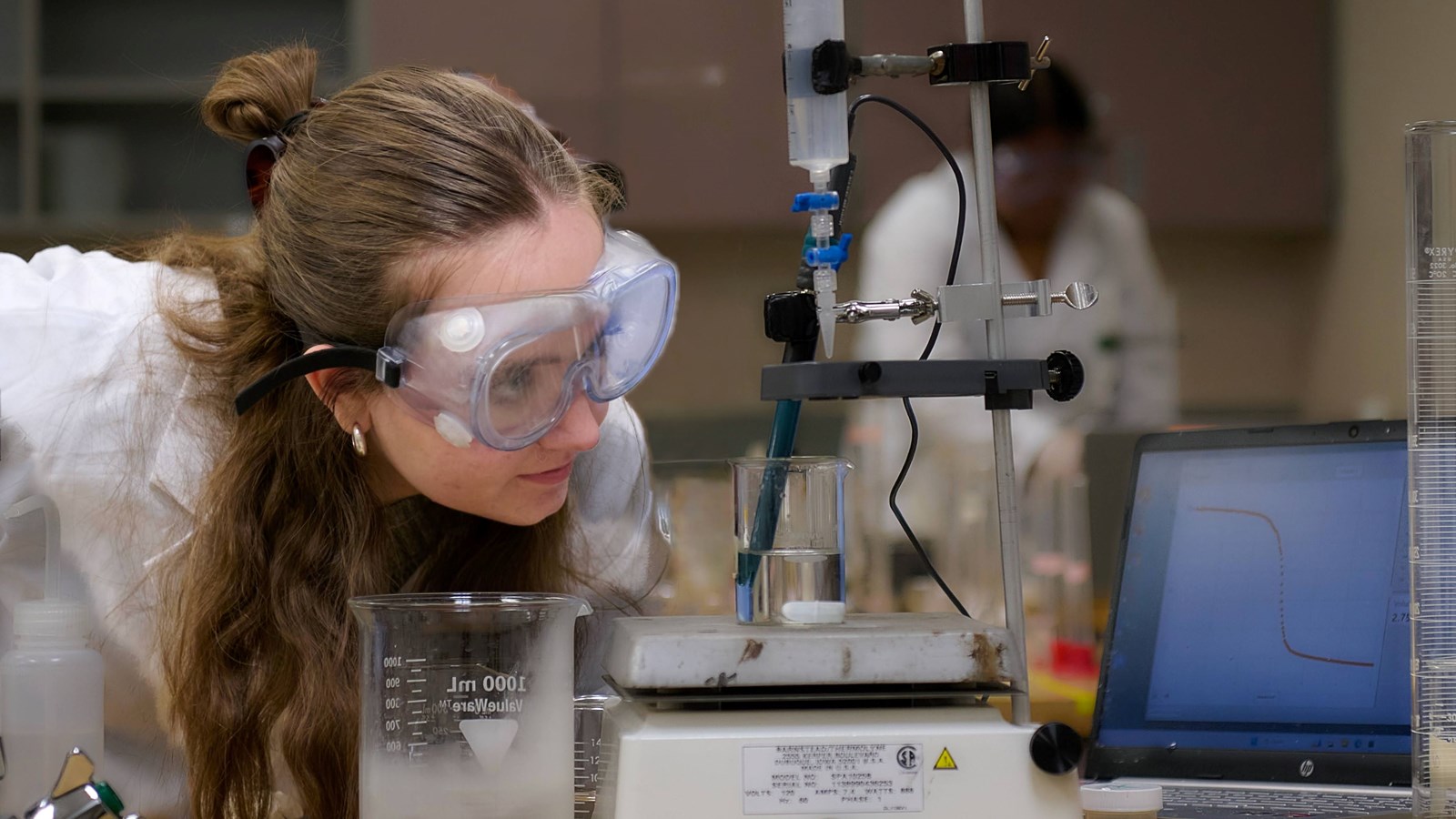
*Photo credit to Micah Kroeker*
Kelvin students tackle real-life issues with science inquiry labs
Kelvin Chemistry, Physics and Biology students have been tackling advanced scientific concepts by designing and performing their own month-long experiments. This inquiry approach to lab work has motivated the students to do an in-depth study of a topic of their choice as they designed, problem-solved, analyzed, verified, and finally presented their results in a month-long project.
Environmental sustainability was the focus for some students who looked at water contaminants, or the effect of changing temperature on the oxygen levels of the water. One student synthesized new aspirin derivatives to see if she could improve solubility. Others looked at health and food storage by testing the degradation of vitamin C over extended time and increased temperatures. Finding the most efficient fuel was another important study. Whether the topic was the lactic acid content of yogurt, the solubility trends of alkali salts, or the temperature dependence of the pKa of a weak acid equilibrium, the focus was on discovery using the scientific method.
Throughout the process, students started to understand the complexity and ambiguity of empirical work. They learned to address challenges, trouble shoot inconsistencies, understand uncertainties, and then finally aggregate and analyze the data and present their results. Students learned that experiments do not always work. The process allowed them to think things through, revise procedures, and develop new strategies. The students were given an opportunity to develop scientific reasoning and strengthen the ability to identify the questions and concepts that guide science. As Einstein said: “The development of general ability for independent thinking and judgement should always be placed foremost, not the acquisition of special knowledge.”
Designing a chemistry lab felt like an incomprehensibly big project. Slowly but surely, I made progress with visualizing, understanding and performing the many aspects. For me, there was no straight forward path, and it took perseverance to figure out my procedure, patience to solve the many little issues and determination to see it through to the end. I learned specific skills like using a spectrophometer and using excel for calculations and tables. I deepened my level of resilience and value of striving for accuracy. It was so cool and inspiring being in a classroom where everyone was immersed in their explorations and discoveries. This project was incredibly exciting and rewarding. I’m very thankful to have had this opportunity and for all the help and support I had from family, friends and teachers.
Julianna Pauls, grade 11
Overall, the whole process was a lot of fun. Putting the skills we had been learning for about a year and a half to practice was really interesting and really showed just what I could do with all that I learned so far. Participating in the lab also taught me a lot about time management and problem solving. I really had to learn to trust my own judgement and figure things out myself which was a very fun challenge and taught me a lot. The design lab really showed me how worthwhile spending the time and effort learning all about chemistry is, not just for learning how our world works, but in teaching life skills as well.
Justin Murphy, grade 11
I chose to focus on medicinal chemistry, specifically exploring salicylic acid and aspirin. There were definitely some challenges along the way. For example, I wasn’t able to access all the materials I initially needed, which meant I had which taught me how to think quickly, solve problems creatively, and adapt when things don’t go according to plan. I discovered how much I enjoy research and scientific inquiry, and I developed important skills like time management. Most importantly, I learned that it’s okay if things are not perfect, as long as you keep moving forward. This experience was an invaluable opportunity to explore my interests and develop skill that will help me in my future as I pursue biomedical engineering.
Shivani Shyam Narayan, grade 12


